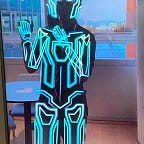Illusions of Infinity: The Enduring Allure of the Impossible Triangle
Journeying Through Art, Mathematics, and Perception
In the world of optical illusions, few enigmas captivate the human mind quite like the impossible triangle. Whether known as the Penrose triangle, the “impossible tribar,” or by its original moniker coined by Swedish artist Oscar Reutersvärd in 1934, this perplexing geometric construct challenges the very essence of our perception. Its evolution into popular culture, spurred by mathematician Roger Penrose’s work in the 1950s, has entrenched it as a symbol of intrigue and curiosity, leaving observers worldwide mesmerized by its paradoxical allure.
Perception vs. Reality
At its core, the impossible triangle challenges the human mind’s ability to reconcile visual information with logical reasoning. To the casual observer, the impossible triangle appears as a tangible three-dimensional object, its edges and angles seamlessly interwoven. However, a deeper examination reveals the illusion’s inherent contradiction — the three sides intersect at angles deemed impossible in Euclidean geometry, leading to a perplexing conundrum that defies conventional understanding.
Deception of the Human Eye
The allure of the impossible triangle lies in its ability to deceive the human eye. Despite…
